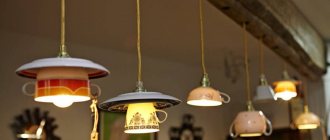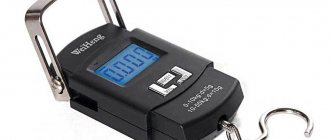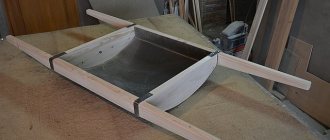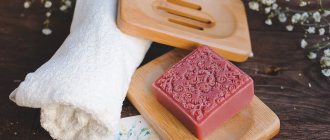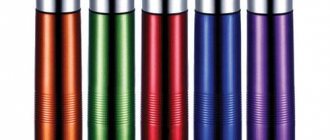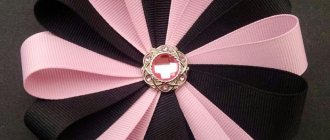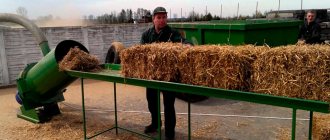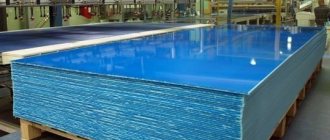Heating water no longer requires any tricks, thanks to the abundance of heating equipment in the form of electric kettles, boilers, coffee machines and other devices. But there are situations when they are not at hand, and you need to boil or heat water right now. In this case, you can assemble a boiler with your own hands from available materials suitable for this.
Safety precautions.
For some, the methods outlined in the article will become nostalgic for their student years or military service. But it should be clearly understood that such homemade devices pose a potential threat both from the point of view of electric shock and from the point of view of fire and explosion hazards. Therefore, their actual use should be minimized whenever possible, and during constant operation, replaced with factory-made devices. Next, we will consider the simplest options that even a novice electrician can assemble without any skills or knowledge.
Terms of use
First of all, you need to know that metal utensils conduct current, and immersing a homemade boiler in a stainless steel or aluminum mug can result in an electric shock.
Therefore, such a heater can only be used in ceramic, glass or plastic dishes.
When using a device made from razor blades, you must adhere to the following rules:
- First, the device is immersed in water, and only then is it plugged into a power outlet.
- While heating the liquid, you should never touch the device or the container in which it is located with your hands.
- Heating water with such a boiler is possible only if it contains metal salts that have conductive properties. Thus, distilled water, completely purified from all impurities, will not be able to provide the boiler with a conductive environment, so it will not heat up.
After your first DIY test, test the water. If the electrolytic boiling method negatively affects its taste, then such a device can only be used to heat water for technical needs.
It is advisable to make such a boiler only in cases where it is impossible to heat water by other means. Such a device is unreliable, short-lived and can be dangerous, so if possible, it is better to buy a boiler in a store. It is inexpensive, but much safer than homemade.
Dear friends, subscribers and casual viewers of the MiFodiCH Life channel. On behalf of the entire team of our project, we would like to congratulate you on the New Year 2022 and Merry Christmas. We want to wish you good health, fulfillment of all your plans, great luck and happiness in the new year 2022.
Winter is the best time for experiments in the style of “Survival”
Today, together with you, we will try to warm ourselves up with hot tea and delicious food, but how can we do this if the only means we have at hand are: two razor blades, a wire with a plug and matches. Now I'll show you everything
make yourself comfortable and enjoy your journey, friends. Let's rush off.
A boiler made from razor blades. How to assemble at home.
Let's list everything we need for our homemade product:
- Brain
- Hands
- Possession of electrical safety skills️
- 2 Blades for a razor (blades from a stationery knife will also work)
- cable with plug
- matches
- a thread
Everything is ready, let's start assembling.
Be careful with blades, friends, you can cut yourself very easily. A very sharp and very dangerous thing, take your time when making this boiler, take care of yourself.
- We take out and unpack two blades
- We take a cable with a plug and expose the wires at its free end
- We connect the wires to our blades, as shown in the figure.
For greater importance and compact size, I wrap the blades with each other with thread, through wooden spacers - matches. The blades and bare parts of the wires must not touch, otherwise a short circuit is guaranteed
I moved the bare ends in different directions in order to isolate the surfaces as much as possible from short circuits, in addition, I wrapped a thread around the exposed wires on twists with blade plates that will serve as a heating element
The matches serve as an insulator that prevents the plates from touching each other. If you are not confident in yourself and your abilities, then a video will be released soon where I will show the entire assembly process from start to finish.
subscribe, as I will start editing the video immediately after writing this article.
INSULATION OF BLADES WITH MATCHES:
the task is very simple and at the same time very difficult, you need to do it wisely without being distracted by anything, but think only about how best to tie matches to a sharp blade with a thread so that they form a strong and wide enough frame for complete confidence in isolating the blades from each other friend. We place three blades on the finished frame (we bring the contact wire of the upper plate in the opposite direction from the contact wire of the lower plate, for maximum insulation) and wind it with thread, while controlling the bends of the blade plate, so that, Boeing forbid, it doesn’t jump out. Fuck these harsh sounds)
Take into account the fact that as the temperature rises, the plate can become deformed and shorten quite a bit, but we don’t want that. The better the frame, the better the insulation, and therefore your wiring, friends)
We can make tea, but how about we use this boiler to cook French fries?
Let's try, after all, we are inventing a universal weapon for survival
- Take a glass jar
- We cut potatoes into it
- lower our boiler
- pour sunflower oil
- plug in the boiler
Water heater from a condenser from a refrigerator
And here’s another idea for you - a solar water heater made from... freon. Despite a lot of information that these substances pose virtually no danger to human health, the truth remains the truth: freons are toxic.
And for anyone who thinks otherwise, just look at their formula - rest assured, there is nothing safe in there!
Freons affect the cardiovascular and nervous systems, liver, kidneys, and destroy pulmonary membranes. In addition, they tend to accumulate in the body, which, in turn, leads to severe intoxication of the latter.
Do-it-yourself boiler repair – Homo habilis. Magazine for skilled people
Rating: 5 / 5
waferboard, flickr.com CC BY
Who doesn't love hot tea or coffee, especially when you want to warm up or spend the evening with friends? The easiest way to heat water for tea is a boiler. It comes to the rescue when there is no gas stove or electric kettle nearby. But sometimes the boiler itself needs help.
As you already understand, a boiler is a good thing, and not expensive either, but their quality leaves much to be desired. And most often this concerns the cord and its connection to the heater. Therefore, sometimes an entire heater is thrown into the trash because of just a faulty cord. This is insulting and not economical.
But there is a way to return the boiler to its former life. Believe me, it is quite possible, you just need to have a few tools and straight hands.
So, for work you will need:
- small screwdriver
- knife
- circuit tester or tester
- wire cutters
The materials you will need are a terminal block; it can be purchased at any electrical goods store or picked up, for example, from an old lamp. The cost of such a block is 30-50 rubles.
The cord can be immediately bitten off at the base of the boiler.
Next, use a knife to carefully cut off the plastic casing.
If it is very difficult, you can use side cutters, biting off the plastic in small pieces. When doing this, be careful not to damage the heater leads.
At some point, the entire plastic housing should come off freely. Only the “naked” heater will remain.
Now carefully clean the heater terminals with a knife or file.
You can also use the tester in resistance measurement mode. Depending on the power of the boiler, the resistance of a working heating element can be in the range of 50-100 Ohms.
So, in our case there is a chain. It would also not hurt to check the breakdown on the housing. We connect the indicator at one end to the leads of the heater, and at the other to its outer metal casing. If there is no chain, everything is in order, we continue to work further. Otherwise, nothing will help the boiler. When checking with a tester, the resistance to the housing must be at least 100 kOhm.
Since the leads are practically not solderable, we will use a connection using a terminal block.
A fairly reliable and safe method, since the current-carrying parts are closed.
Unscrew the screws to the desired level and insert the ends of the heater into the terminal.
Now use a thin screwdriver to clamp them.
If you do this, there will be better contact between the wire and the terminal. Even better, if possible, solder the ends
It is very important that the entire exposed part of the wires enters the terminal and nothing sticks out anywhere. This is a necessary safety measure against electric shock.
We clamp the ends of the wires with the terminal screws.
Make sure that the screw does not completely cut the copper core when clamping. Otherwise, the cord will soon fall out or burn out in this place
That's all. For complete safety, you should only place and remove the boiler from the cup after first unplugging the plug from the socket.
From the editor.
When using a boiler converted in this way, exercise extreme caution! Do not touch the boiler when it is plugged in, do not touch the container in which the boiler is located, and do not put your fingers or conductive objects into the water. You can significantly increase the safety of using the boiler and restore its appearance if you fill the terminal block with epoxy resin, selecting or making a suitable shape
Electricity stealing swindler
The first electrical meters began to be installed back in the 50s. As usual, this event was not so much a mass event as a selective one.
Those who were “lucky enough” to have a meter were given sockets, while the rest had to be content with only light bulbs. At the same time, payment for the services of power engineers was made at the established tariff.
Another attempt by the state to deceive our brother failed miserably. People immediately realized that it was much cheaper to live with light bulbs. It's just inconvenient without sockets. Thus, the “rogue” was born.
Roughly speaking, the “rogue” was a socket with a light bulb base.
They screwed it into a cartridge and used government electricity left and right. To say that the device was dangerous is an understatement. At the same time, we should give credit to the author of the “swindler”, because he managed to create a brilliant invention.
Assembling a homemade boiler from blades
Attach the stripped threads to both blades. Using welding is useless, so let's do a strong twist. It is desirable that the exposed part of the wire be as short as possible. Remember electrolysis.
Next, you need to secure the canvases at a short distance from each other. From 2-3 mm to 1-2 cm. The boiling speed depends on this and, as an inverse relationship, on energy consumption. The farther the blades are from each other, the cheaper the device. As a result, the longer the water takes to boil.
There are two ways to assemble a boiler with your own hands. Install a dielectric pad made of matches and tie wires around the frame.
This is the most common design - a powerful boiler that quickly heats water. Power requires a good plug and reliable wiring. This connection is reliable and the device is designed for repeated use.
The second option is easier to assemble and does not require threads. However, this is more of a one-time scheme: “repair” is unreliable. But you can assemble such a boiler in up to 5 minutes.
Advantages: no risk of short circuit, less energy consumption. In this case, the water takes longer to heat up.
Blade options may sometimes fail to work because the amperage and power are too low. You will have to wait up to an hour for it to boil.
Such “heaters” are called students or prisons: according to the main places of use. Having certain skills, you can cook dumplings using such a cauldron (naturally, a metal frying pan in a glass jar will cause a short circuit). And boiling water for tea is child's play.
Safety first
In order for your homemade boiler to perform its direct duties, and not burn out all the wiring in the electrical network, you must adhere to some rules:
- Never leave the device switched on unattended.
- Due to the fact that the blades themselves and some of the wires remain exposed, you need to be as careful as possible, because any careless movement can lead to an electric shock. Do not touch water, exposed parts or boil water in metal containers, as this can be life-threatening.
- The quality of water boiled in this way is very doubtful. This is due to the fact that a large amount of metals gets into it during the process.
Separately, it is worth noting that the power of such a boiler directly depends on the distance between the blades and the salinity of the water.
Alternative options
Another donor for contacts is heels for army boots and combat boots.
They are assembled in the same way as from blades: threads, matches. The performance and power are similar. Since the metal is of relatively high quality, water boiled with their help can be drunk.
Fastening elements can serve as a “garage” alternative. Two bolts are screwed into a piece of plastic, the issue of connecting wires is solved reliably and elegantly: simply tighten the nuts. “Electrodes” are located at a distance of 5 cm.
The efficiency of this design is very high: a liter jar boils in less than a minute.
The only problem is hygiene. Finding stainless steel bolts is quite difficult, and galvanized models quickly lose their coating, again due to electrolysis. Therefore, this option is more suitable for technical heating of water than for food purposes.
Boiler made from Spoons. ANYONE can do this! WITH YOUR OWN HANDS. From a can, wire and spoons
To make a boiler, you need to find a heating element. The simplest solution would be to use an old heating element from an electric kettle or other appliance.
The manufacturing process consists of several stages:
removing a heating element from an unnecessary electrical appliance
It is important to ensure that the heating element is working; this can be done using a household tester; In addition to the tena, we will need an electrical cord with a plug, as well as terminal blocks. Electrical wires from the cord are connected to the contacts of the heating element; the final stage will be making reliable insulation and checking the finished device using a multimeter.
If the test confirms that the heater is working, you can begin operating it.
Water heater made from scrap materials
There is another way to quickly make a boiler, but it is quite dangerous
This device should not be left unattended and special care must be taken when using it.
We will need the following materials:
- two metal objects. These can be nails, spoons, bolts or knives, but most often blades are used to make a boiler;
- matches or other wooden objects;
- sewing threads;
- cord with plug.
First of all, you need to connect the metal plates (blades) to the stripped contacts of the power cord. For greater reliability, you can use a soldering iron.
The boiler is assembled in this way: wrapped matches are placed on one blade, then they are covered with the second blade. Then this structure is also wrapped with threads for reliability.
You can learn how to make boilers thanks to this video:
In life, sometimes unforeseen circumstances arise. One of these is the lack of hot water, for example, during repair work, when there is no gas, without which you cannot boil water.
It turns out that making such a heating device is not at all difficult, the main thing is to find the necessary materials in your apartment.
A homemade boiler or a primitive 12-volt heating device can be made from available materials
For this we need:
- An insulated piece of two-core wire.
- Blade, which is used for a razor in the amount of 2 pieces. You can also use a paint knife blade. If you don’t have any in your apartment, even two metal spoons will do.
- A saucepan or jar for water.
- Two matches or wood chips.
- Threads.
1 option
. You need to attach a wire to the ends of the blades. The blades should not be allowed to touch each other. To do this, we install spacers made of matches or wood chips between them on both sides. Then you should wind the blades with thread. The wires should also not touch. You just need to place a homemade 12-volt boiler in a container of water, plug it into the outlet and wait until it boils.
Option 2
When using a metal container to boil water, one wire can be connected to the pan, and a blade, spoon, or other available metal object can be attached to the other end. It is important to ensure that the latter does not touch the walls of the metal container
This turns out to be a 12 volt boiler.
A self-made boiler with a power of 12 volts copes with boiling a small amount of water quite quickly.
It is important to follow safety precautions
when using this heating device:
- Before you are going to use a homemade boiler, you must carefully check all the connections of the structure for strength.
- Under no circumstances should you put your hands in the water while heating the liquid (you may get an electric shock).
- Do not leave the heating device turned on unattended.
- Don't risk boiling salt water. Otherwise, you will cause an explosion, causing most of the water to splash out of the container.
- Do not use this design for more than a month. And also think about the quality of the water you are going to drink. Due to the ingress of metals into it, the water becomes of poor quality.
How to use a boiler?
Now you know how to make a boiler with your own hands. The design diagram is shown in the figure in the article. But you still need to know how to use it. The main requirement for the container in which boiling will be carried out is that it should not conduct electricity.
Plastic or ceramic containers are suitable (the second is preferable)
You also need to be careful when turning it on and off. First, lower the device into the water, then just turn it on.
And when heating, do not touch the water, wire or container.
From spoons
For such a boiler you will need two metal spoons, a two or three-wire cable, a power plug, a glass jar and two clothespins. The process of making a boiler consists of the following stages:
- remove the insulation from the cable and wires to obtain 2–3 cm of bare wires on each side; Rice. 11: Strip the insulation from the wires
- attach a plug to one end of the cable, and attach spoons to the terminal of the other end;
- place the spoons in a glass jar on opposite sides and secure with clothespins, the spoons should not touch; Rice. 12: Attach the spoons with clothespins
- secure the cable on the outside of the can with tape.
Rice. 13: Secure the cable with tape
The boiler is ready - just pour water into the jar and plug in the plug. Please note that it is unsafe to move the jar with the device turned on, so first unplug the boiler.
Rice. 14: finished kettle made from spoons
How it works
Electric current flows between points of different potentials. Of course, the medium must be conductive. Water is far from a dielectric; the resistance is quite low (unless, of course, it is a distillate). If you immerse two electrodes with a sufficient potential difference in a glass of water, the current strength will be very high. So much so that the heating temperature will cause the water to boil. For comparison, a similar current flows through the filament of an incandescent lamp. The metal becomes white hot.
Why doesn't a glass of water explode? The resulting steam bubbles are a kind of dielectrics that protect the system from short circuits. Let's not go into calculations of voltage and current, let's turn to practice.
Materials used for making the boiler
To make a boiler you will need:
- soldering iron;
- soldering tin;
- pliers;
- heating element of an electric kettle;
- soldering acid;
- plug;
- cable PVS 2*0.75.
Soldering wires
The ends of the cable wires are first stripped of insulation, etched with alcohol-rosin flux or soldering acid, and a layer of tin is applied to the ends of the wires. The heating element contacts are also etched and soldered to the ends of the cable wires. The cable length is at your discretion.
For a reliable contact connection with the plug, the ends of the cable wires are also etched, followed by the application of tin.
Contact insulation
As an insulating material for connecting a wire to a heating element, a cambric is first put on a separate wire, then after soldering the wires, the cambrics are put on the contacts of the heating element.
Photo and description
To provide information in a more visual form, the topic will be supplemented with personal photographs.
Photo No. 1 shows a homemade boiler, which we have been using for more than ten years. To make such a boiler you will need about fifteen minutes.
In this image \photo No. 2\ it is clearly visible that terminal blocks are connected to the contacts of the heating element from a used electric kettle.
The two wires of the network cable are respectively also connected to the terminal blocks. Everything is quite simple, you take an unnecessary power cable with a plug and any heating element - a heating element for heating water.
Resistance-heater measurement
Diagnostics of the heating element for our example with a boiler is carried out in the following way:
The multimeter device is set to the range for measuring resistance; two probes of the device can be connected to the pins of the plug as shown in photograph No. 3. The display of the device in the photograph shows the total resistance - the resistance of the network cable and the heating element.
The resistance value for this measurement is 27 ohms.
When measuring the resistance of a separate heating element - heating element \photo No. 4\, the resistance is 38.1 Ohms.
For both methods of measuring resistance, we can conclude that the reading from the device is satisfactory and corresponds to the resistance of this heating element.
How to check the network cable
Checking a single network cable, both for a boiler and for any type of household appliance, is carried out using the following methods:
For example, we need to check the network cable\electrical cord\ with plug. To do this, you can short-circuit two wires of the network cable \photo No. 5\ and connect two probes of the device to the pins of the plug \photo No. 6\.
Photo No. 6
In this device reading \photo No. 6\, with the integrity of two wires of the network cable, the device display shows a very low resistance, the resistance in its value is equal to the short circuit mode.
This will mean that there is no break in the network cable and that the cable is suitable for use.
Photo No. 7
The following method for diagnosing a network cable is shown in the image of photograph No. 7. That is, we also short-circuit one end of the network cable \photo No. 5\ and touch one of the pins of the plug with a probe.
In the same way, each individual wire of the network cable is checked:
- for connection \phase, neutral\;
- ground \ground wire\.
And as a reminder to all that has been said, such diagnostics are carried out in a passive way \without connecting to an external AC voltage source\. When diagnosing any electrical circuit - a boiler, an electric kettle, and so on, if the resistance value is zero - the electrical connections should be reconsidered.
That's all for now. Follow the section
Preparation method
First of all, you need to take care of making the supply conductor for the boiler. It is best to make it from PVA cable. An electrical plug is connected to the wire - you need to disassemble it and loosen the contact screw clamps.
The plug terminals are attached to the pre-stripped wire. When using a permanent plug, its wire must also be stripped and attached to the wire by carefully twisting the copper wires. Now you need to isolate the junction and begin making the boiler itself.
The work is performed in the following order:
- Connect two matches together and wrap them tightly with thread. Do the same with another pair of matches. They will be located between the metal sheets and act as dielectrics.
- Connect one power wire to the first blade, and another to the second (phase 1, zero to 2).
- Place dielectrics between the two blades and secure the structure with thread. Conductors with different poles must not touch their surfaces.
We recommend: What can be done with expired medications?
Now you can check the functionality of the homemade product by applying power.
The smaller the distance between the metal plates, the faster the water will heat up. Therefore, if desired, you can use not 4 matches, but 2 as a dielectric.
The heating rate also depends on the power of the network and the volume of the heated liquid. Water in a half-liter jar will boil longer than in a cup or glass with a volume of 200-250 ml.
How to make a boiler with your own hands - the best proven methods
Most often, in artisanal conditions, boilers are made from:
- Razor blade. Blades Satellite.
- Nails.
- Heating element for a kettle.
Heating element from an old kettle
Heating element from an old kettle
You can also make functional devices for heating water at home from nichrome wire, which is installed on a ceramic insulator.
The main task that must be accomplished when designing heating elements yourself is to minimize the possibility of short circuits and electric shock. When using low-voltage homemade products, there is little to fear from electric shock, but devices operating on a 220 V network can cause accidents and fire.
Use of "semi-finished products"
If you have a heating element from an electric kettle or boiler, just attach the power wires to it, and the “factory boiler” is ready. But this design does not relate to the question “how to make a boiler with your own hands,” since the main element is manufactured industrially. Nevertheless, home craftsmen often use spare parts from damaged electrical appliances.
When assembling such a boiler, soldering cannot be used. Only the terminal connection of the supply wire.
How it works
Electric current flows between points of different potentials. Of course, the medium must be conductive. Water is far from a dielectric; the resistance is quite low (unless, of course, it is a distillate). If you immerse two electrodes with a sufficient potential difference in a glass of water, the current strength will be very high. So much so that the heating temperature will cause the water to boil. For comparison, a similar current flows through the filament of an incandescent lamp. The metal becomes white hot.
Why doesn't a glass of water explode? The resulting steam bubbles are a kind of dielectrics that protect the system from short circuits. Let's not go into calculations of voltage and current, let's turn to practice.
From nails
For such a boiler you will need 6 nails 8cm long, a wooden strip about 2cm thick that can be installed on the edge of a container made of non-conductive material, a ready-made power cord or a pair of wires with a plug. To work, you need pliers and a drill with a drill bit of the same diameter as the nails.
The principle of creating a boiler is as follows:
- drill holes in the board at a distance of 5 mm from each other;
- insert the nails into the holes, leaving a free distance of 2 - 3 cm above the board so that it is convenient to wind the wire;
Rice. 10: Insert nails into holes - strip the edges of the cable by 5 - 10 cm with a knife or wire cutters, you should be left with bare metal without varnish or other insulation;
- screw the exposed wires to the nails right under the heads - 3 nails for each wire, note that the reliability of the electrical connections depends on the tightness of the fit, so they need to be tightened as tightly as possible;
- Drive the nails in as far as possible using pliers, but make sure that the mechanical impact does not weaken the electrical contact point.
The boiler is ready, pour water into a glass jar or plastic bowl, place a bar on top so that the sharp edges of the nails are immersed in the water. Plug in the boiler and wait until it boils. Never try to check the heating temperature of the water with your finger or hand, as you will receive an electric shock if the boiler is turned on.
From the heating element of the kettle
You can also assemble a boiler from an unnecessary electric kettle, provided that the heating element is in working order. In this case, you don’t need to come up with anything extra - you will need the heating element itself and a cord with a plug. First, check the integrity of both parts of the electrical device using a multimeter.
Rice. 7: Check with a multimeter
Ring the cord and heating element, if they are in good working order, then they can be safely used to make a boiler.
To connect the terminals of the heating element, it is more convenient to use terminal clamps, but if you don’t have these on hand, you can use a regular soldering iron.
To make a boiler, follow these steps:
- disassemble the kettle and remove the heating element from it, do the same procedure with the stand and remove the cord from it; if the cable is long enough, you can simply cut it at the base.
- using a knife or wire cutters, remove the insulation from the edges of the wire;
- secure the terminal clamps to the contacts of the heating element using a screwdriver;
- on the other side, connect the stripped wires of the cord to the terminals; Rice. 8: connect the wires to the heating element
- Use a multimeter to check the boiler circuit and the resistance between the terminals of the plug and the housing.
Rice.
9: ready-made boiler from heating element The boiler is ready, it can be used both for heating technical water and for boiling drinking water. In terms of its operating parameters, it is no different from a classic kettle or boiler, so it can also be used in metal containers. Due to the fact that the heating device uses a factory heating element, you get a fairly powerful boiler.
The most powerful homemade boiler
Nichrome spiral
In order to boil a large volume of water, you can make a powerful portable device from available materials. To manufacture the device you will need the following parts:
- Nichrome spiral with a wire diameter of at least 1 mm.
- Industrial fuse series PN 2.
- Two-core cable made of wire with a cross-section of at least 4 mm2.
- Screwdriver and wood screws 20 mm.
- The plug is of a collapsible type.
Fuse PN-2
The manufacture of a powerful device for heating water is carried out in the following sequence.
- The PN-2 fuse is disassembled to remove the ceramic body of the product.
- 8 self-tapping screws, which were formed during disassembly of the device, are screwed into holes in the body of the ceramic insulator.
- The end of a nichrome spiral clings to one of the 8 screws.
- Then, inside the body of the electrical insulator, the spiral is pushed through to the opposite end of the round insulator and again fixed around the screw.
- The spiral turns in the opposite direction, but is already fixed to another screw screwed into the insulator.
- In the same way, the spiral and self-tapping screws are connected at 5 more points, after which stripped copper wires are connected to the first and last screws and the screws are completely screwed into the ceramic insulator. Considering the significant power of such a homemade boiler, the cross-section of the connected copper wire must be at least 4 mm2. A plug is installed on the other end of the wire.
Checking a powerful homemade water heater
The boiler can only be operated in a suspended state. The heating element must be completely immersed in the water and must not touch the walls or bottom of the tank. When using a homemade powerful boiler, it is strictly forbidden to touch the container and body of the device while heating the water.
Homemade 220 Volt boiler: heating element from a working kettle
An alternative option for making a homemade boiler would be to use a heating element from a kettle or other heating device. It is worth noting that the connection diagram, power, principle of operation and heating rate of the liquid will not differ from the declared characteristics.
DIY items:
- Twin wire;
- Terminal blocks.
First of all (if necessary), we disassemble the old kettle and remove the heating element. The most important thing when carrying out this work is not to damage the contacts of the heating element.
Next, to make a boiler, you will need two terminal blocks in a plastic shell. You can easily find these connectors in any specialized store. They are usually sold in a single package of 20 pieces.
After this, you need to make sure that the heating element is in working condition. To do this, using a multimeter, we test the device for resistance. Set the multimeter to 200 Ohm. The resistance of the heating element should be in the range of 27 - 38 Ohms.
Then, we attach two terminal blocks to the contacts of the heating element. On the other hand, we attach a wire to these pads. The best option would be to use a wire with a ready-made plug to connect to the mains. If there is no plug, you should mount it to the wire.
Next, be sure to insulate the junction of the wire with the heating element. To do this, you can use heat-shrinkable tubes, which are put on before connecting the wire, or regular electrical tape.
After assembly, the device is tested with a multimeter. If the resistance is normal, it is connected to the network. Ready!
12 Volt boiler
A popular device for many car owners, which allows you to heat water far from civilization using power from a car battery. The most difficult thing is the selection of a heating element, which is calculated by the formula: P = U 2 / R
where P is the power of the boiler;
U – supply voltage rating;
R – circuit resistance.
For example, with a circuit resistance of 1 Ohm, the power of a boiler powered by a 12V source will be 144W. Accordingly, the heating time of the glass will be about 10 – 15 minutes.
The heating element can be ceramic resistors or a nichrome thread wound on a textolite. Connect them to the two terminals of the battery and the boiler is ready. The main condition is that the heating container must be made of dielectric material.
Rice. 15: 12V heating element
Alternative options
Another donor for contacts is heels for army boots and combat boots.
They are assembled in the same way as from blades: threads, matches. The performance and power are similar. Since the metal is of relatively high quality, water boiled with their help can be drunk.
Fastening elements can serve as a “garage” alternative. Two bolts are screwed into a piece of plastic, the issue of connecting wires is solved reliably and elegantly: simply tighten the nuts. “Electrodes” are located at a distance of 5 cm.
The efficiency of this design is very high: a liter jar boils in less than a minute.
The only problem is hygiene. Finding stainless steel bolts is quite difficult, and galvanized models quickly lose their coating, again due to electrolysis. Therefore, this option is more suitable for technical heating of water than for food purposes.
Homemade radio transmitters
In the same 50s, citizens' interest in radio began to grow rapidly. But the post-war USSR had not yet recovered from the not so distant tragic events, keeping all stations under strict control. And it is quite natural that the people did not really like this, as a result of which they had to establish the process of manufacturing homemade radio stations.
Along the way, a new terminology appeared - “radio hooliganism”, and with it the decree “On liability for the illegal manufacture and use of radio transmitting devices.” Violation of the latter was subject to severe punishment - measures of social sanctions or administrative liability in the form of a fine with confiscation of equipment.
Of course, scorched equipment a la “wire-on-wire” could not be safe. Just like the disk under the TV, and the “swindler” who steals electricity. But that was all. It happened, but it has passed, and today no one would even think of heating water with blades or making radio transmitters for wave interception.
Principle of operation
In fact, the principle of operation is quite simple. The main condition for the operation of this electrode boiler (and that is exactly what it is called) is a heated body, in this case it is water. The liquid that is between the two electrodes must be electrically conductive. This is why a homemade boiler cannot boil distilled water, since there are no conditions suitable for electrical conductivity. This is due to the fact that a conductor is required for the flow of an electrical impulse. That is why distilled water is very often used as experiments between plates.
To prevent an electrical short circuit, several wooden spacers must be inserted between the two blades, which must then be secured with threads. Yes, this is a rather painstaking process, but the result is worth it.
A boiler for those who are afraid to put wires in water
People who are not very well versed in physics, and in particular in electrical processes, are often surprised how they can dip bare wires into water.
And even after seeing how others do it, they are still afraid to repeat it. In principle, this is correct. Such homemade products are actually dangerous.
Nevertheless, especially for such suspicious and distrustful people, some home craftsmen came up with the design of a homemade electric boiler, made in such a way as not to immerse the ends of the wires in water.
Necessary materials:
- 2 stainless steel metal plates;
- electrical cord with plug;
- a small piece of plastic (the author uses the front panel of the PC system unit);
- fasteners - 2 bolts, 2 nuts and 4 washers.
First of all, you will need to strip the ends on the two cores of the electrical cord, and twist them into rings.
Next, using the prepared bolts, nuts and washers, we fasten the ends of the wire to the metal plates in which we need to pre-drill holes or cut out U-shaped grooves. The plates themselves are attached to a plastic part.
The edges of the plates (on one side of the workpieces) will need to be bent at an angle of 90 degrees.
Thus, the electrodes will be on one side of the plastic, and the wires on the other. Only the metal plates themselves are placed in a container with water, while the ends of the wires will be completely dry.
Place the plastic plate with the electrodes on a mug of water (or other container) and plug the plug into the outlet. For reliability, you can secure the wire with a clamp or clothespin so that it does not dangle.
You can watch the video for details on how to make a boiler with your own hands. The author of the YouTube channel GlucMaster shared his experience.
Do-it-yourself boiler repair: rules
In most cases, the boiler can be easily repaired yourself. This requires some tools and strict adherence to instructions.
Tool for work:
It is worth noting that work done correctly and efficiently will allow the device to last a long time.
Malfunctions of boilers include failure of the heater, damage to the cable and malfunction of the plug.
If the heater fails, it must be completely replaced. But if the malfunction is insufficient contact of the wire with the terminals of the heating element, then the following must be done. Using pliers, you bite off the plastic that hides the contacts of the device.
Next, the burnt wire is disconnected and reconnected. As insulation, you can use a gun with liquid plastic.
If the cable itself malfunctions, it is separated at the break point and connected using terminal blocks. It is better not to use twists for these devices.
If the contact in the plug is broken, it is necessary to disassemble the device and make a quality connection.
TV stand from the “Health” CD
Well, here is another striking example of neglect of basic safety measures - the “Health” disk for a thin waist, famous throughout the USSR, used by resourceful citizens as a TV stand.
Of course it's convenient. This is an improvised bracket that rotates a heavy Soviet-era “box” all 360 degrees.
But how safe is it?
And if we leave aside the high probability of the same short circuit due to the far from perfect TV wiring system of that time, there remains one more, no less dangerous risk. Just imagine that at one fine moment, after another, but less successful half-turn, this whole bandura can fall down!
Razor blade boiler
This option has already become a classic for people who lived during the period of domestic shortages. Over the years, a lot of variations of such heating devices and decent experience in their implementation have appeared, so let’s look at this model in more detail. Blades are not the only option for boiler electrodes, but they are used most often and this is due to several important reasons:
- High quality steel - during electrolysis, an electric current flows in the water column, formed by metal electrons released from the electrodes. Due to the resistance of the liquid, not all particles move from one electrode to another, but precipitate in the form of metal, significantly changing the taste of the water. Razor blades are made of fairly high quality, so the percentage of sediment from such a boiler will be minimal.
- Optimal ratio of geometric and physical parameters - despite the fact that no one invented blades as an electrode for a boiler, they provide a relatively high rate of heating of the liquid.
- Mass distribution - can be found in almost every home, garage or workshop, which is why they are always at hand.
Materials for a blade boiler
Before manufacturing, you need to acquire the following elements:
The blades themselves - for the quality operation of the boiler, the brand and condition of the cutting surfaces do not matter; you can even use dull blades
It is important that they are of the same design; it is better if you take them from the same package. A dielectric for isolating one blade in a boiler from another - you can use any items you have (plastic lids, plugs). If nothing comes to mind, it is best to use regular matches to isolate the heating elements from each other. Material for fixing electrodes in a boiler - threads are most often used
You definitely shouldn’t fasten it with glue, and even more so, you shouldn’t resort to wire and other metal products - they will immediately short-circuit the blades. Power cord with plug - any option with stranded copper wires that can be conveniently screwed around the blade will do.
This is a minimal set; if you wish, you can complicate the design by using crocodiles to connect wires to the blades or installing a plastic block as a base.
Manufacturing procedure
To make a boiler from blades, it is advisable to have the following tools on hand: pliers, a knife or side cutters, and electrical tape. The manufacturing process is as follows:
- strip the wires on the power cord with the electrical plug, you will need about 2 - 3cm of bare wire;
Rice. 1. Strip the wires - screw each end of the wire to the blade, note, do not try to solder them - it is useless, you need to screw the wire tightly, if you can’t do it by hand, take pliers;
Rice. 2: Screw the wires to the blade - fix the blades at a distance from each other using a dielectric, in this case matches are used;
Rice. 3: Put matches between the blades - wrap the resulting boiler with threads so that it does not fall apart during use; if it holds up as it is, you can do without threads.
Rice. 4: Secure the blades with thread
The homemade water heater is ready, it should be noted that the distance between the blades determines both the parameter of the power consumed from the network and the heating rate. Therefore, you will get the fastest heating at a distance of 2 - 3 mm (per match thickness); at a distance of 2 - 3 cm, the heating time will increase proportionally.
Rice. 5: Perpendicular placement of blades on matches
But the amount of electricity consumed to boil water, say, in a half-liter jar, will be the same for both cases.
Do not forget that all homemade boilers that pass electric current through the heated liquid cannot be immersed in metal containers; they will be under potential and can give an electric shock. Only dishes made of dielectric material are suitable - glass, polymer and others.
Rice. 6: Blade boiler in action
How to make a homemade water boiler
Why blades, and not, say, spoons, nails, and other metal objects? Optimal balance of consumer characteristics.
- Firstly, this method has been around for decades, and in “those days” almost the entire male population shaved with a safety blade. The material was always at hand. So - traditions...
- Secondly, the surface area of the resulting electrodes was wonderfully suited to balance the characteristics. The load on the electrical wiring was not too high, and at the same time the water boiled quite quickly.
- Finally, the material. The blades are made of fairly high quality steel. They last a long time and practically do not pollute water.
Let's take a closer look at the last point. There is such a thing as electrolysis. When an electric current occurs between the electrodes in a liquid medium, particles of the material move along with the electrons. A significant part remains in the water, not reaching the opposite electrode. Naturally, this does not make the water any tastier, and if you have a homemade boiler made from nails, it is not suitable for drinking at all. So blades (especially high quality ones) are an ideal donor for the heater.
Manufacturing technology
We will need the following materials:
- Power cable with plug (preferably with a cross-section of at least 0.75).
- Two safety blades. The sharpness of the edge does not matter, usually just dull ones were used. It will be better if both electrodes are the same (for uniform wear). In the case of blades - one company, preferably from the same package.
- Dielectric for installation between blades. Matches were usually used. You cannot simply lower the electrodes in a freely suspended state. They may touch (moving while boiling) and a short circuit will occur.
- Thread for fixing structural elements. As practice has shown, this is the safest method of fastening. You can't use glue; the rest of the fasteners simply don't fit.
Instructions for creation
Many became acquainted with this type of equipment when they served in the Soviet army or in any other conditions where it was necessary to boil water, but there was no suitable device for this purpose.
To create a boiler you need the following items:
- 2 blades.
- Matches.
- Two-core wire.
In order to make such a boiling unit, it is necessary to attach wires to two heating elements (in this case, blades). They should not touch each other, so spacers made of matches must be installed between them. Next, all that remains is to lower the finished device into water and bring it until it begins to boil.
Caution - danger!
In fact, this design of the boiler is much more dangerous than it seems at first glance. For example, if you assemble a unit from latches for a window, such a structure, lowered into water, will bring it to a boil in literally a minute and a half, but in this case the light will flicker throughout the house, and sparks may shoot out of the water.
It is very simple to make, but it is worth paying attention to the energy intensity of such a unit - it is impressive. Under no circumstances should the device be immersed in salt water. In this case, an explosion may occur, after which, in addition to splashing water, it will also knock out the plugs. And if you pour salt into already boiling water, the consequences will be much more dangerous.
Finally, I would like to say that in any possible case it is better to refuse to use a boiler with two blades. Even if you do it according to all the rules, there will always be danger. Be careful and try not to further jeopardize your health and the health of your loved ones.

